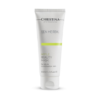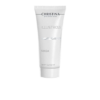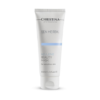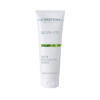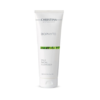
Red light therapy has emerged as one of the most promising non-invasive treatments in modern skincare and wellness. This scientifically-backed approach uses specific wavelengths of light to penetrate the skin and stimulate cellular function, offering a range of benefits from anti-aging effects to wound healing.
Whether you’re considering red light therapy for cosmetic purposes or therapeutic applications, understanding how it works and what it can do for your skin is essential.
What Is Red Light Therapy?
Red light therapy, also known as low-level light therapy (LLLT) or photobiomodulation, is a treatment that uses low-wavelength red light to address various skin concerns and health conditions. Unlike ultraviolet (UV) light, which can damage the skin, red light therapy operates at wavelengths between 630-850 nanometers, which are considered safe and beneficial for skin health.
The therapy works by delivering concentrated wavelengths of red and near-infrared light to the skin and underlying tissues. These light waves penetrate deep into the skin layers, where they’re absorbed by cells and converted into energy. This process stimulates the mitochondria – the powerhouses of cells – to produce more adenosine triphosphate (ATP), which is essential for cellular repair and regeneration.
How Red Light Therapy Works on Skin
When red light penetrates the skin, it triggers several biological processes:
Collagen Production: The light stimulates fibroblasts, the cells responsible for producing collagen and elastin. These proteins are crucial for maintaining skin firmness and elasticity.
Improved Circulation: Red light therapy increases blood flow to treated areas, delivering more oxygen and nutrients to skin cells while removing waste products more efficiently.
Reduced Inflammation: The treatment has anti-inflammatory properties that can help calm irritated skin and reduce redness associated with various skin conditions.
Cellular Regeneration: By boosting ATP production, red light therapy accelerates the natural healing and regeneration processes of skin cells.
Benefits of Red Light Therapy for Skin
Anti-Aging and Wrinkle Reduction
One of the most sought-after benefits of red light therapy is its anti-aging effects. Regular treatments can help reduce the appearance of fine lines and wrinkles by stimulating collagen production. As collagen levels increase, skin becomes firmer, smoother, and more youthful-looking.
Many users report visible improvements in skin texture and a reduction in age spots after consistent use.
Acne Treatment and Prevention
Red light therapy can be particularly effective for managing acne. The treatment reduces inflammation associated with acne breakouts and may help regulate sebum production. When combined with blue light therapy, it can also target acne-causing bacteria, providing a comprehensive approach to clearer skin without harsh chemicals.
Wound Healing and Scar Reduction
The regenerative properties of red light therapy make it valuable for wound healing. It accelerates tissue repair, reduces inflammation, and can minimize the appearance of scars, including surgical scars and stretch marks. The improved circulation and collagen production contribute to faster healing times and better overall skin recovery.
Skin Tone and Texture Improvement
Regular red light therapy sessions can even out skin tone, reduce hyperpigmentation, and improve overall skin texture. The treatment promotes healthy cell turnover, resulting in a more radiant and uniform complexion.
Reduction of Sun Damage
While red light therapy should never replace sun protection, it can help address existing sun damage. The therapy’s ability to stimulate collagen and repair cellular damage makes it useful for treating photoaged skin and reducing the appearance of sunspots.

Red Light Therapy Benefits for Different Skin Types
Understanding how red light therapy works with your specific skin type can help you maximize results and address your unique skincare concerns.
Red Light Therapy for Dry Skin
Dry skin particularly benefits from red light therapy’s ability to enhance cellular function and moisture retention. The treatment stimulates the production of natural moisturizing factors within the skin, helping to improve hydration levels from within. By boosting circulation, red light therapy delivers essential nutrients and oxygen to dehydrated skin cells, promoting better barrier function and reducing flakiness.
Key benefits for dry skin include:
- Enhanced moisture retention and improved skin barrier function
- Increased production of natural oils and lipids
- Reduced appearance of dry patches and rough texture
- Better absorption of moisturizers and serums applied after treatment
- Improved skin elasticity and suppleness
For those with dry skin, red light therapy can be combined with hydrating serums containing hyaluronic acid or ceramides immediately after treatment for enhanced penetration and effectiveness.
Red Light Therapy for Combination Skin
Combination skin, characterized by oily areas in the T-zone and dry patches on the cheeks, responds well to the balancing effects of red light therapy. The treatment helps regulate sebum production without over-drying or over-stimulating the skin, making it ideal for this challenging skin type.
Benefits for combination skin include:
- Balanced oil production across different facial zones
- Reduction of enlarged pores in oily areas
- Improved hydration in dry patches without increasing oiliness
- Even skin tone and texture throughout the face
- Reduced inflammation that can occur in both oily and dry areas
- Minimized appearance of blackheads and congestion
Red light therapy for combination skin works by normalizing cellular activity, helping the skin maintain optimal function across all areas. This makes it an excellent choice for those who struggle to find treatments that address both concerns simultaneously.
Red Light Therapy for Sensitive Skin
Sensitive skin types often struggle with traditional skincare treatments that can cause irritation, redness, or adverse reactions. Red light therapy offers a gentle, non-invasive alternative that’s particularly well-suited for reactive skin.
Advantages for sensitive skin:
- Non-irritating treatment with no harsh chemicals or abrasive techniques
- Powerful anti-inflammatory effects that calm redness and irritation
- Strengthened skin barrier function, reducing sensitivity over time
- Reduced reactivity to environmental triggers
- Soothing effects on conditions like rosacea and eczema
- No downtime or recovery period needed
The gentle nature of red light therapy makes it safe for even the most sensitive skin types. The treatment’s anti-inflammatory properties can actually help desensitize reactive skin over time, building tolerance and resilience. Those with sensitive skin should start with shorter session durations and gradually increase as their skin adapts to the treatment.
Important considerations for sensitive skin:
- Begin with 5-10 minute sessions and increase gradually
- Monitor skin response carefully after each treatment
- Avoid using other potentially irritating products immediately before or after sessions
- Choose devices with adjustable intensity settings
- Consult with a dermatologist if you have severe skin sensitivity or active skin conditions
Treatment of Skin Conditions
Red light therapy has shown promise in managing various skin conditions, including:
- Psoriasis
- Eczema
- Rosacea
- Dermatitis
The anti-inflammatory properties help soothe irritated skin and may reduce flare-ups associated with these conditions.
Common Uses of Red Light Therapy
At-Home Devices
The market now offers numerous at-home red light therapy devices, ranging from handheld wands to full-panel systems. These devices make the treatment accessible and convenient, allowing users to incorporate red light therapy into their daily skincare routines.
Professional Treatments
Dermatology clinics, medical spas, and wellness centers offer professional-grade red light therapy sessions. These treatments typically use more powerful devices and may be combined with other skincare procedures for enhanced results.
Full-Body Wellness
Beyond skincare, red light therapy is used for muscle recovery, joint pain relief, and overall wellness. Full-body LED beds or panels are available at specialized facilities for comprehensive treatment.
Side Effects and Safety Considerations
Red light therapy is generally considered safe with minimal side effects when used properly. However, it’s important to be aware of potential concerns:
Minimal Side Effects
Most people experience no adverse effects from red light therapy. When side effects do occur, they’re typically mild and may include:
- Temporary redness or warmth in the treated area
- Mild eye strain if proper eye protection isn’t used
- Slight headache in rare cases
Safety Precautions
Eye Protection: While red light is safer than UV light, it’s still advisable to protect your eyes during treatment, especially when using high-intensity devices or treating facial areas.
Photosensitivity: People taking photosensitizing medications or those with light-sensitive conditions should consult a healthcare provider before starting red light therapy.
Pregnancy: Pregnant women should seek medical advice before using red light therapy, as research on its effects during pregnancy is limited.
Skin Cancer: Individuals with a history of skin cancer or suspicious skin lesions should consult a dermatologist before beginning treatment.
Proper Usage Guidelines
To maximize benefits and minimize risks:
- Follow manufacturer instructions for device-specific guidelines
- Start with shorter sessions and gradually increase duration
- Maintain appropriate distance from the light source
- Use consistently for best results – typically 3-5 times per week
- Avoid overuse, which can potentially cause skin irritation
What to Expect: Results Timeline
Red light therapy requires consistency and patience. While some people notice subtle improvements after a few sessions, significant results typically appear after several weeks of regular use:
- 1-4 weeks: Improved skin texture and subtle glow
- 4-8 weeks: Reduction in fine lines and improved skin tone
- 8-12 weeks: More noticeable anti-aging effects and collagen improvement
- 3-6 months: Significant improvements in wrinkles, scars, and overall skin quality
Results vary depending on individual skin conditions, age, device quality, and treatment consistency.

Choosing the Right Red Light Therapy Option
When selecting a red light therapy device or treatment, consider:
Wavelength: Look for devices that emit wavelengths between 630-850nm for optimal skin benefits.
Power Density: Higher irradiance (measured in mW/cm²) means shorter treatment times. Quality devices typically offer 30-100 mW/cm² at the recommended distance.
Treatment Area Size: Choose between targeted handheld devices for specific areas or larger panels for face or body treatments.
FDA Clearance: For medical-grade results, look for FDA-cleared devices, especially when treating specific conditions.
Budget: At-home devices range from under $100 to several thousand dollars. Professional treatments cost $25-$150 per session.
Combining Red Light Therapy with Other Treatments
Red light therapy can be effectively combined with other skincare approaches:
- Topical serums and moisturizers may penetrate better after treatment
- Professional facials and chemical peels can be enhanced with red light sessions
- Microneedling combined with red light therapy may accelerate healing and results
- Blue light therapy can be alternated with red light for comprehensive acne treatment
Always consult with a skincare professional before combining treatments to ensure compatibility and safety.
Red light therapy offers a safe, non-invasive approach to improving skin health with numerous scientifically-supported benefits. From reducing wrinkles and treating acne to accelerating wound healing and improving overall skin quality, this technology has proven its value in both clinical and at-home settings.
While results require consistent use over several weeks or months, the minimal side effects and growing body of research make red light therapy an attractive option for those seeking natural skincare solutions. Whether you choose professional treatments or invest in an at-home device, red light therapy can be a valuable addition to your skincare routine.
As with any skincare treatment, it’s wise to consult with a dermatologist or healthcare provider before beginning red light therapy, especially if you have existing skin conditions or health concerns. With proper use and realistic expectations, red light therapy can help you achieve healthier, more radiant skin.




